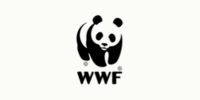Biodiversity
Why set science-based targets for species and ecosystems?
Our focus
Biodiversity is the total variety of all Earth’s species, their genetic information, and the ecosystems they form. Humans depend on healthy ecosystems to stabilize the climate, provide food, clean water, purify air, provide raw materials, and protect coastlines. Biodiversity loss is threatening Earth’s capacity to maintain the healthy ecosystems we need, and this must be addressed urgently. Businesses’ activities contribute to biodiversity loss through actions like changing the way land, freshwater, and ocean are used; exploiting resources; and contributing to climate change, pollution, and invasive species’ prevalence.
For business, biodiversity loss presents physical, regulatory, financial, and reputational risks. Businesses can improve competitiveness by responding to societal concerns and consumer preferences. Through setting science-based targets for nature, companies can play their part in halting biodiversity loss while improving business performance.
1 million
animal and plant species face extinction according to the Global Assessment Report on Biodiversity and Ecosystem Services
6th
mass extinction on Earth is on the horizon, the first to be driven by the impacts of human activities.
SBTs
are aligned with the Convention on Biological Diversity’s Post-2020 Framework and are designed to support the Sustainable Development Goals (SDGs)
Latest news
A core goal of SBTN’s work is mitigating biodiversity loss by ensuring companies contribute to the protection, restoration and sustainable use of natural ecosystems. It is therefore essential that all actions taken through the targets effectively support biodiversity.
The first release of science-based targets for nature in 2023 directly supports biodiversity by addressing some of the dominant drivers of biodiversity loss. We address the coverage of biodiversity in the first methods release in a technical paper and present high level approaches to address gaps. This will be followed with a more detailed analysis to be published later in the year outlining plans for subsequent releases.
Prior to this, Biodiversity Hub members contributed their expertise to Biodiversity metrics to be used in the target setting process (in prioritization for Step 2 and for the Step 3 methods for land). They also contributed to the development and writing of the Step 1 and 2 guidance, which gives companies an understanding of their impacts on biodiversity.
Further technical developments for SBTN are ongoing.
Download technical paper




